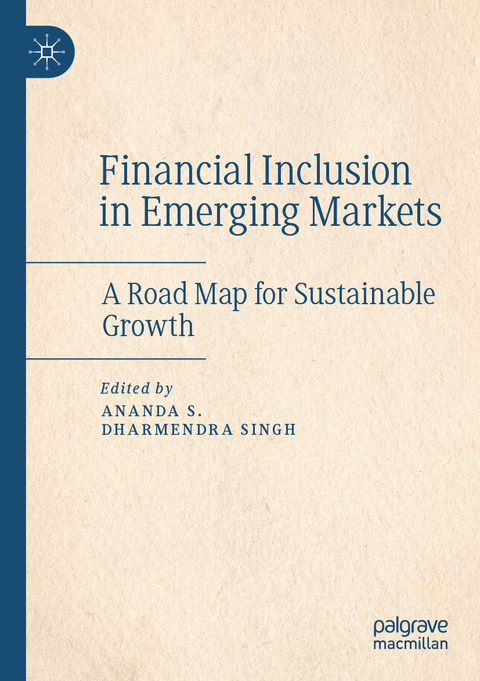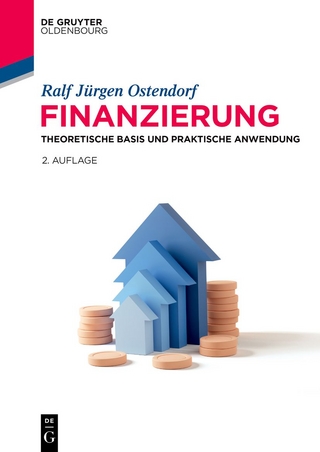
Financial Inclusion in Emerging Markets
Palgrave Macmillan (Verlag)
978-981-16-3822-0 (ISBN)
Financial inclusion ensures ease of access, availability, and usage of the financial products and services to all the sections of the society. The book will help in recognizing the role of financial inclusion as one of the main drivers in reducing income inequality and thus supporting sustainable economic growth of the countries, especially of an emerging economy. The book provides conceptual and practical ideas from the practitioners, best practices from the experts, and empirical views from the researchers on the best practices and how to mitigate the challenges and issues plaguing the development of the financial inclusion.
Dr. Ananda S. is currently Director of Postgraduate Studies and Research Department at College of Banking and Financial Studies, Oman. He has 30 years of expertise in the area of management education, research and consultancy. He has also served in Mutual Fund Industry for about four years. Dr. Dharmendra Singh is currently Assistant Professor (Finance) at Modern College of Business and Science, Oman. He has more than 20 years of experience in teaching and research in the banking and finance domain.
Section I: Financial Inclusion Practices.- Chapter 1 Demographic discriminators in the adoption of banking services: Evidence from the Primitive Tribal Households.- Chapter 2 Financial Inclusion in OIC Countries: Challenges and Opportunities.- Chapter 3 Key Determinants of Financial Inclusion: An Empirical Evidence from Western Balkan Countries.- Section II: Banking Products and Services.- Chapter 4 Business Correspondents’ Perspective on Financial Inclusion Initiatives: An Empirical Analysis.- Chapter 5 Assessing the performance of district cooperative banks: An efficiency-based approach.- Section III: Micro Insurance and Credit Societies.- Chapter 6 Role of Non-Governmental Organizations in Miro Health Insurance Schemes.- Chapter 7 Using a non-traditional multi-dimensional index approach to assess the performance of primary agricultural credit societies.- Section IV: Micro-financing and Self-help Groups.- Chapter 8 Are Indian Microfinance Institutions Efficient? A Two-Stage Double Bootstrapped DEA-based Analysis.- Chapter 9 Impact of microcredit on livelihood status of rural women in India.- Chapter 10 Role of Self-Help Groups in Poverty Alleviation and Women Empowerment with Reference to India.- Section V: Government Policies and Regulations.- Chapter 11 Microfinance sector and the supportive role of regulator in its transformation: A case study of Indian State.- Section VI: Key Drivers of Financial Inclusion.- Chapter 12 Transforming Financial Sector through financial literacy and Fintech revolution.- Chapter 13 Impact of Financial Factors on Social and Financial Sustainability in Indian Banking Sector: A Mediating Role of Financial Literacy.- Chapter 14 Promoting financial inclusion through digital wallets: An Empirical Study with street vendors.- Section VII: Sustainable Economic Growth.- Chapter 15 Digital Financial Inclusion: Strategic Issues and Imperatives.- Chapter 16 Financial Inclusion and inequality: An Empirical study from Saudi Arabia.
| Erscheinungsdatum | 11.10.2022 |
|---|---|
| Zusatzinfo | 27 Illustrations, color; 9 Illustrations, black and white; XXIX, 332 p. 36 illus., 27 illus. in color. |
| Sprache | englisch |
| Maße | 148 x 210 mm |
| Themenwelt | Wirtschaft ► Betriebswirtschaft / Management ► Finanzierung |
| Wirtschaft ► Volkswirtschaftslehre ► Finanzwissenschaft | |
| Wirtschaft ► Volkswirtschaftslehre ► Mikroökonomie | |
| ISBN-10 | 981-16-3822-5 / 9811638225 |
| ISBN-13 | 978-981-16-3822-0 / 9789811638220 |
| Zustand | Neuware |
| Haben Sie eine Frage zum Produkt? |
aus dem Bereich


